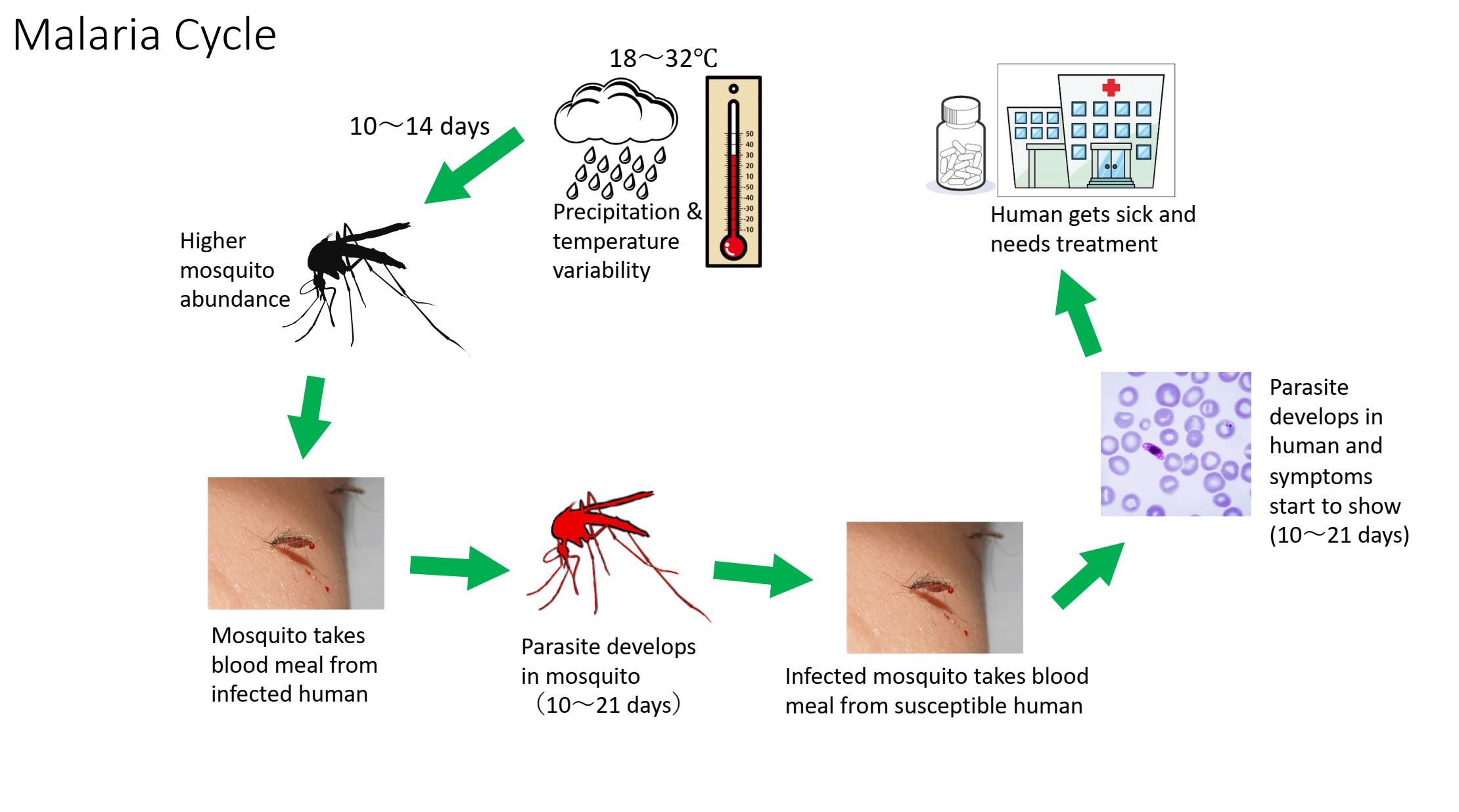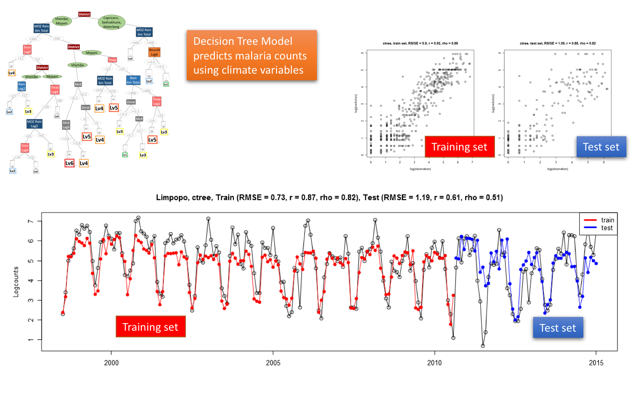Prediction of Climate-based Malaria Outbreak Probability
Development of an Infectious Diseases Early Warning System for Southern Africa incorporating Climate Predictions(iDEWS)

During recent years, damage to human health caused by infectious diseases has increased in various parts of the world. Malaria, among the infectious diseases, is known to be present in 91 countries and regions (WHO 2017). The Anopheles mosquito carries the malaria parasite and infects humans when feeding on their blood. The life cycle of the mosquito (reproduction rate, behavior, etc.) is affected by its environment, particularly in regards to temperature and precipitation. Substantial variability in air temperature and rainfall with climate variability/change might induce an outbreak of the disease in regions where no such outbreaks have been reported thus far. The Application Laboratory of JAMSTEC has developed the SINTEX-F seasonal climatic prediction system using the Earth Simulator, which can predict global climatic variability several months ahead. In South Africa, it has been shown that malaria outbreaks are related to La Niña in the eastern equatorial Pacific and the Subtropical Dipole mode in the south Indian Ocean. Based on the SINTEX-F seasonal climatic prediction, we have developed a system to predict regional high-resolution climate. Using the prediction information, we have further developed a malaria outbreak prediction system. We have implemented experimentaly a malaria early warning system in the Limpopo province of South Africa. Futher, we are investigating relatiohs between climate variability and outbreak of other infectious diseases to develop prediction system for them.


Research Institute for Value-Added-Information Generation (VAiG)
Application Laboratory
